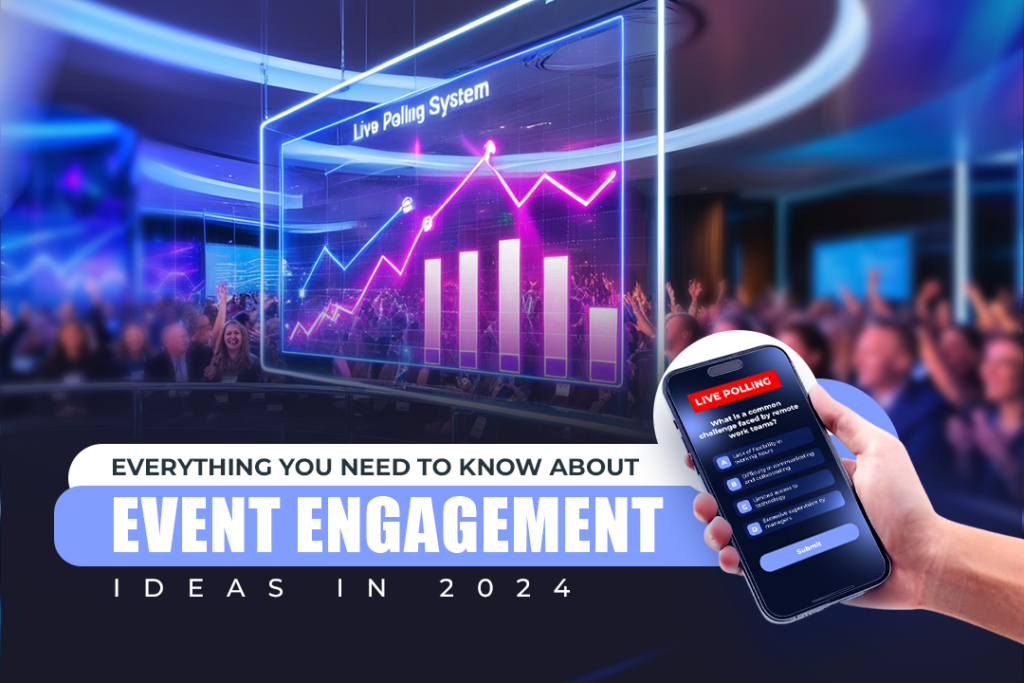
A recent online North American survey showed that more than half of North American business leaders think a lack of audience participation is the primary factor behind lower perceived event or conference attendance and their consequent success.
For any event to be successful, audience satisfaction is not just important; it’s paramount. As organizers, it’s their responsibility to ensure their attendees leave their conferences, seminars, workshops, or events feeling valued and inspired. This is where event engagement ideas come into play, not just to ensure attendees have a good time but to create a memorable experience that will make them eager to return for future editions.
We wrote this comprehensive article to equip event marketers in 2024 with some of the best and most creative event engagement ideas. We aim to provide innovative techniques, pragmatic tips, and valuable insights to capture the audience’s attention and foster long-lasting connections with them. We want you to feel informed and empowered, ready to implement these strategies in future events.
What is Event Engagement?
The term ‘event engagement’ encompasses the level of interaction between organizers and attendees, reflecting their active participation and the organizers’ ability to connect with them. Audience engagement can be cultivated through various activities, such as discussions, Q&A sessions, brand activations, and workshops.
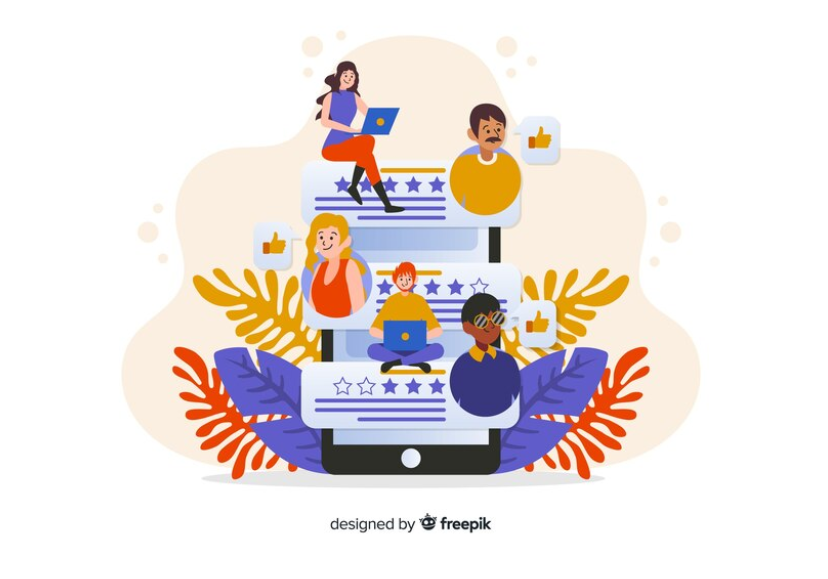
The success of event engagement efforts relies on accurately tracking attendee numbers and thoroughly assessing their involvement during the sessions. Additionally, the effectiveness of participant networking and the frequency of visits to exhibitor booths serve as crucial indicators.
Why are Event Engagement Ideas Important?
Event marketers have the power to keep their audience captivated, involved, and excited throughout the event. They can do this by employing unique engagement strategies or ideas. They can ensure their audience leaves with lasting memories, feeling satisfied and inspired. This proactive approach also helps them stand out in an ever-increasingly competitive event industry.
Let’s examine how event engagement ideas can benefit event marketers/organizers.
- If attendees are engaged throughout the event, they will likely return for the following editions. Their loyalty to the event and the brand will only grow if they enjoy the event experience. This way, event marketers and organizers can create a strong and consistent supporter base to produce a high event ROI in the long run.
- Event marketers and organizers are only likely to receive positive feedback if attendees are engaged throughout the event. Knowing the audience’s feelings about the event is only expected to help them troubleshoot big or small problems. Those who are highly involved are likelier to give quick feedback, which can then inspire attendees to register for the following event.
- Event marketers and organizers can help attendees build connections and networks through their audience engagement endeavors. This creates a community of attendees that keeps the event going yearly. When you create opportunities for engagement between the audiences as peers and colleagues, you promote a collaborative learning atmosphere that improves mutual understanding and knowledge sharing.
How to Craft an Effective Event Engagement Idea?
Many activities unfold during an event, which can become too overwhelming for organizers and attendees to manage effectively. If they fail to do so, they may find it difficult to focus.
These event stakeholders are prone to many distractions, such as multiple exhibitor booths, constant networking opportunities, the sheer volume of content, ongoing work responsibilities, social media, the allure of personal gadgets, etc. So, the question that plagues organizers’ minds often is this- How do you reduce these distractions to captivate your attendees?
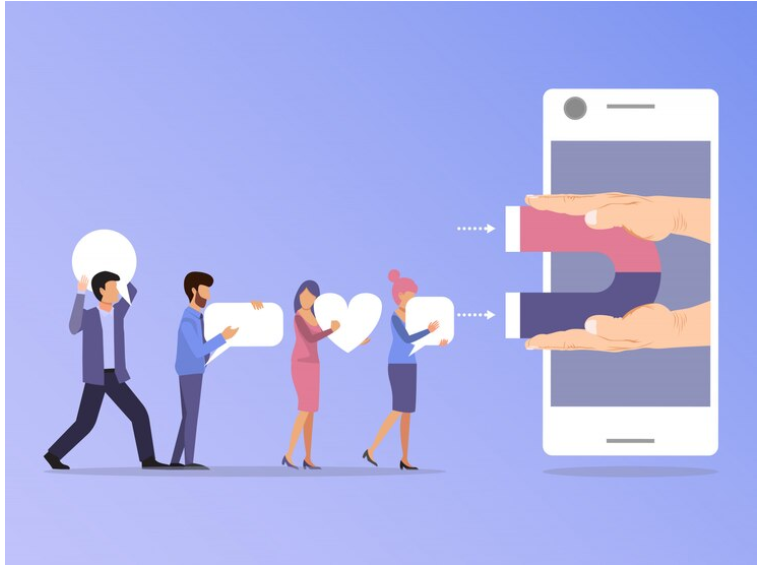
Emphasizing the importance of crafting compelling content from the beginning of the planning stage is the most crucial way to immerse attendees in the event experience. Event organizers must ensure that the quality of their content is engaging and innovative and experiment with different forms and styles to make it interactive and enjoyable.
You can experiment with your content’s style, topic, and delivery methods. Studying your audience’s interests and being flexible enough to orient your content accordingly will help enhance engagement. Strategies like experiential and immersive techniques and gamification will go a long way in engaging your audience. You can also employ other event engagement ideas to captivate your audience’s attention.
Let’s look at them in more detail below.
10 Creative Event Engagement Ideas To Captivate Your Audience
Here are a few exciting event engagement ideas that you, as an event organizer, can try out for your audience.
1. Pre-Event Engagement
Following are some of the most commonly used pre-event engagement ideas to promote an event:
- Teaser Campaigns are a great digital marketing strategy for stimulating interest among attendees before an event. Event marketers often use prudent advertisements that slowly and gradually increase attendees’ curiosity about an event by revealing a little along the way and not all at once. Companies use teaser campaigns for upcoming events to widen their reach and engagement.
- Pre-event Surveys are another great way to understand your audience’s interests and preferences regarding different aspects of the event, be it the food, venue, speakers, accommodation, and the like. By asking them to fill in a pre-event survey, you will be able to be aware of your audience’s tastes and preferences and cater to their expectations. If you want to read more about pre-event surveys and how they help improve the event experience, read our article, Here’s How Pre-Event Survey Questions Can Improve Attendee Experience.
- Exclusive Previews provide a sneak peek of what happened at the event in snippets, which could be a glimpse of one of the guest speakers or any other highlight from the event/conference. They effectively use the power of suspense, exclusivity, and verbal messages to engage with the audience ahead of the event. Giving a sneak peek into what’s to come, previews can influence potential attendees to register early and buy tickets.
To read more about the different pre-event activities that can enhance audience engagement, read our article, “How Can Pre-Event Activities Execute a Successful Event.”
2. Interactive Sessions
Interactive sessions make the audience feel involved from start to finish and encourage them to pay attention and participate, which is the hallmark of a successful event. They also fuel immediate feedback from attendees, which helps organizers and presenters gauge their interests, understanding, and retention level, according to which they can tailor their content. Additionally, interactive sessions enable organizers to build a connection with the attendees and eventually foster a sense of community with them.
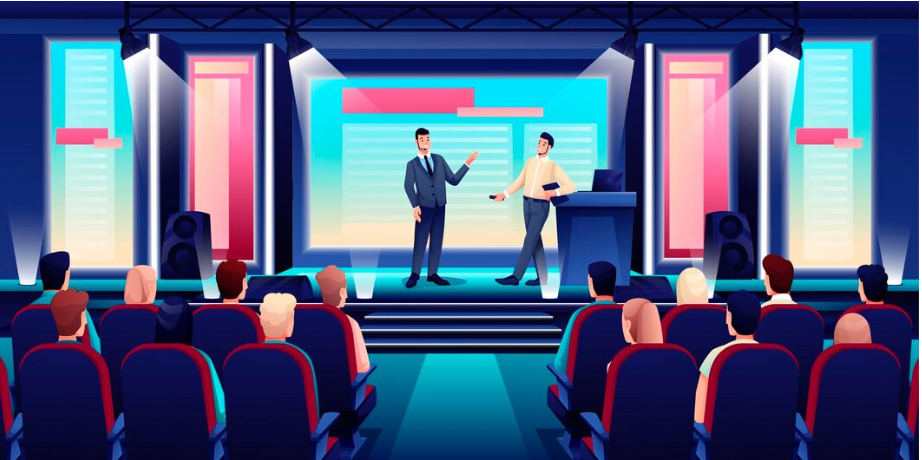
Following are a few examples of interactive sessions that organizers can try out to engage with their attendees.
- Live Polling is a great way to interact with your attendees. It is precisely what it sounds like—a poll or a group of questions the attendees must answer in real-time. Live polling has many benefits, such as breaking the ice with the audience and encouraging them to participate in the event. You can use Slido, Mentimeter, and Vivox apps to conduct live polling.
Live polling also helps organizers collect direct and immediate feedback and insights from the attendees. This allows them to gauge their reactions and opinions and optimize their event, enhancing audience engagement and satisfaction.
However, organizers must ensure the live poll questions are clear and concise to avoid miscommunication and confusion and stimulate immediate and precise responses. They should also be relevant to the event content /theme and attendees’ interests to enhance audience engagement. Maintain a balance between informative and lively questions to make the event atmosphere enjoyable and valuable. - Q&A Platforms are usually conducted after a presentation or speech and are an excellent example of an interactive session that enables the audience to participate rather than passively listen. Through Q&A sessions, participants can ask quick questions and get them answered in real-time, which keeps them engaged and invested in the event. Engaged attendees are more likely to remember information and have a positive experience, which can improve the event’s overall success.
Virtual events are also conducted on platforms that allow the question-and-answer feature. These platforms enable attendees worldwide to ask questions and get answers.
Through Q&A sessions, there is no room for confusion or misunderstanding, as doubts and concerns are addressed in real time. This further enables and promotes networking and a sense of community among the attendees, encouraging them to return to the event year after year. To learn more about Q&A sessions and the different ways of improving the audience’s experience, read our article, “15 Tips That Guarantee A Productive Q&A Session.”
- Breakout sessions are a fantastic way to foster in-depth conversations in an informal setting. They provide a comfortable environment for attendees to engage in smaller group discussions or activities. These workshop-style group activities are designed to solve problems, aligning with the conference or event theme/agenda. These sessions are also a great way to network with like-minded people amid an ocean of attendees at an event, which helps foster connections beyond the event.
3. Gamification
No matter what event professionals plan on organizing—a large-scale conference or a small-scale workshop—event gamification, including event gamification, can improve attendee experiences and allow organizers to reach their goals. Gamification is using games to make event activities and experiences more hands-on and participatory for the participants.
Event organizers can use gamification as a compelling event engagement idea to turn conference activities into fun, interactive, and immersive experiences that influence attendees to make the most of their event experience by actively participating, networking, and upskilling.
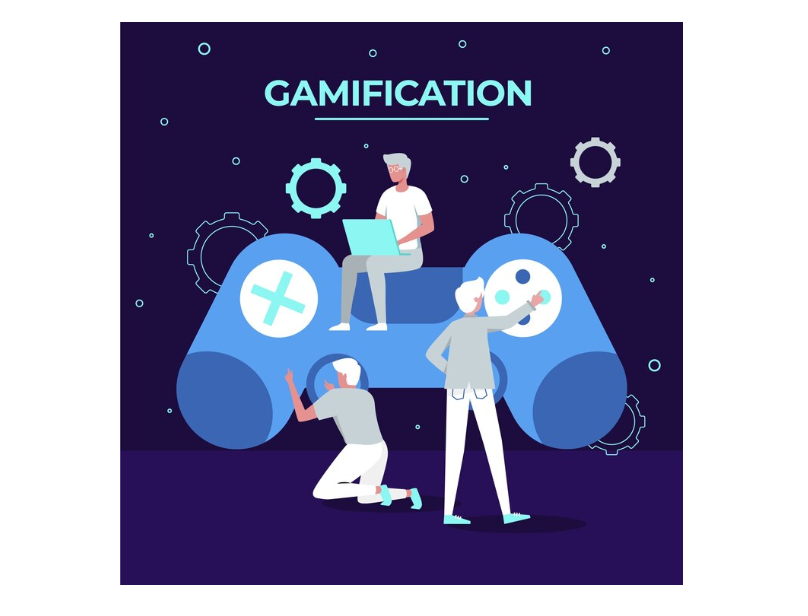
Gamification incorporates challenges and rewards to get participants involved in activities and foster a sense of community.
Let’s look at a few gamification ideas in detail below.
- Event App Challenges leverage technology to create fun, immersive, and competitive challenges for attendees to enhance their event experience. App challenges influence attendees to participate actively in game-like experiences like scavenger hunts, trivia, and leaderboards and provide small rewards to drive competitive behavior among attendees.
Your event app also allows you to track attendee behavior and reward them accordingly. For instance, if it is a badge game, the app may have a list of tasks one must complete to gain a badge. One may also be assigned a badge upon logging in to exchange contacts with someone, completing a survey, or asking a question during a Q&A session, to name a few. This way, the app will get attendees to participate in the event by incentivizing them and invoking a competitive spirit.
- Prize Drawings: The chance to win prizes like raffles and giveaways can bolster event attendance and participation, as people are bound to show up if they know they are likely to win something valuable. Attendees are highly likely to engage in event activities, like visiting booths and exhibitions, attending sessions, or completing surveys. If they know these actions, they will increase their chances of winning a prize. The excitement of prize drawings can lead to word-of-mouth promotion as attendees share their experiences with friends and colleagues, potentially attracting more participants to future events.
- Interactive Exhibits invite attendees to participate rather than observe, fostering a more profound engagement with the presented content. They are an excellent way to showcase new technologies, products, or ideas engagingly, allowing attendees to see and experience innovations firsthand.
For example, organizers can have hands-on stations where attendees can try their products. If the exhibitors are tech companies, this could include live software demos on tablets or computers. They can also allow attendees to engage with content hands-on, leading to better understanding and retention of information.
4. Social Media Engagement
Let’s look at a few social media event engagement ideas below:
- Live Streaming makes an event accessible to people who cannot attend in person due to geographical, financial, or physical barriers. This inclusivity can enhance a brand’s reputation while increasing the event’s overall participation. Promoting the live stream and showing real-time attendee participation can create a sense of FOMO among those not attending, encouraging them to participate in future events. For example, Salesforce live streams its keynote sessions, including those by CEO Marc Benioff and other industry leaders. This allows participants worldwide to access critical insights and announcements in real-time.
- Photo Contests encourage attendees to actively participate in the event by capturing and sharing their experiences. This hands-on involvement increases their engagement and investment in the event. Photo contests often involve sharing photos on social media with event-specific hashtags. This increases the event’s online presence and encourages attendees to interact with each other’s posts, fostering a sense of community.
For instance, photo contests work best when they capture behind-the-scenes activities or preparations. Photos that capture networking and interactions among attendees are also excellent photo contest themes for events.
- Influencer Partnerships are an effective way to use social media to engage with your audiences. Influencers have large and loyal followings, and partnering with them can significantly extend the reach of your event to a broader audience that may need to be made aware of it. They have established trust and credibility with their followers. Promoting your event adds a layer of authenticity and makes their audience more likely to attend or engage with your event.
When influencers share their experiences and excitement about an event, it serves as social proof. Their followers will likely perceive the event as valuable and worth attending, leading to increased participation.
Influencers often have a cross-platform presence. They can amplify your event content across multiple channels, including Instagram, Twitter, YouTube, TikTok, and blogs, maximizing exposure. Influencer partnerships also play a vital role in promoting an event even after it is concluded by sharing highlights, recap videos, and testimonials. This post-event content can help maintain momentum and build anticipation for future events.
If you want to know more about social media strategies to help engage your audience, our article “27 B2B Social Media Content Ideas To Drive Success All Year Long” is for you.
5. Networking Opportunities
People are often motivated to attend events to meet potential clients, partners, and industry peers. The promise of valuable networking can significantly boost attendance. Networking also allows attendees to share insights, experiences, and knowledge. This exchange can lead to new ideas, innovations, and collaborations, making the event more valuable.
Additionally, networking can extend the event’s impact beyond its duration. Connections made during the event can lead to ongoing relationships and collaborations, maintaining engagement long after the event has ended. It can be integrated into various parts of the event, such as during breaks, meals, or dedicated sessions.

Interactive elements like speed networking, matchmaking apps, and networking lounges enhance engagement. Let’s look at some of these elements in more detail.
- Speed Networking sessions can help break the ice, especially for attendees who might be shy or new to networking. The structured format makes it easier for everyone to participate. It allows attendees to meet a large number of people in a short amount of time. This efficiency is particularly valuable at busy events where time is limited.
Even if the initial conversation is brief, speed networking provides a foundation for future interactions. Attendees can follow up with those they find interesting or relevant, leading to more in-depth relationships. The structured nature of speed networking allows organizers to quickly gather feedback on the format and its effectiveness, enabling continuous improvement for future events. - Networking Lounges: Unlike structured networking sessions, lounges allow for spontaneous and organic conversations. Attendees can approach and engage with others at their own pace, leading to more natural and enjoyable interactions. Lounges provide a space where networking can happen continuously throughout the event rather than being confined to specific time slots. This extended availability increases the opportunities for attendees to meet and connect.
Event organizers and sponsors can brand the networking lounge, creating additional visibility and engagement opportunities. Branded lounges can leave a lasting impression on attendees and reinforce the event’s theme or message. Lounges can be equipped with technology like charging stations, Wi-Fi, and tablets, making it convenient for attendees to stay connected and productive while networking.
- Matchmaking Services: For business-focused events, matchmaking services can significantly enhance attendees’ return on investment (ROI). Connecting with the right partners, clients, or collaborators can create new business opportunities and partnerships.
Matchmaking services often use data and algorithms to match attendees based on their profiles, interests, and goals. This data-driven approach increases the likelihood of successful and productive connections. Offering matchmaking services can also increase an event’s perceived value. Attendees are more likely to see the event as a worthwhile investment if they know they will leave with valuable connections.
6. Technology Integration
Integrating technology into events can help organizers create a more engaging, efficient, and inclusive experience for all participants. Technology can transform traditional presentations into interactive experiences through augmented reality (AR), virtual reality (VR), and gamification. These elements make sessions more engaging and memorable.
Technology gives organizers real-time data on attendee engagement, session popularity, and feedback. This data helps them make immediate adjustments and improve future events. With the help of technology, event organizers can provide personalized schedules, session recommendations, and targeted content based on attendees’ interests and profiles, making the event more relevant and engaging for each participant.
Some ways in which technology improves events and audience engagement are as follows:
- Augmented Reality features that enhance the physical environment with digital overlays, such as AR-guided tours or interactive displays.
- Virtual Reality (VR) Experiences: VR setups that offer immersive experiences, such as virtual tours of exhibits or interactive product demos.
- Event Apps: Comprehensive apps that offer schedules, networking tools, interactive maps, and personalized agendas.
- If you want to read about the different strategies that event marketers and organizers have used to promote their events, read our article, 18 Great Experiential Marketing Examples To Inspire Your Next Event.
7. Entertainment and Performances
Incorporating entertainment and performances into an event helps organizers create a dynamic and engaging experience that resonates with attendees, making the event more enjoyable and successful.
Events, primarily conferences and seminars, can sometimes become monotonous with back-to-back sessions. Entertainment and performances provide a refreshing break, helping to re-engage attendees and maintain their interest throughout the event.
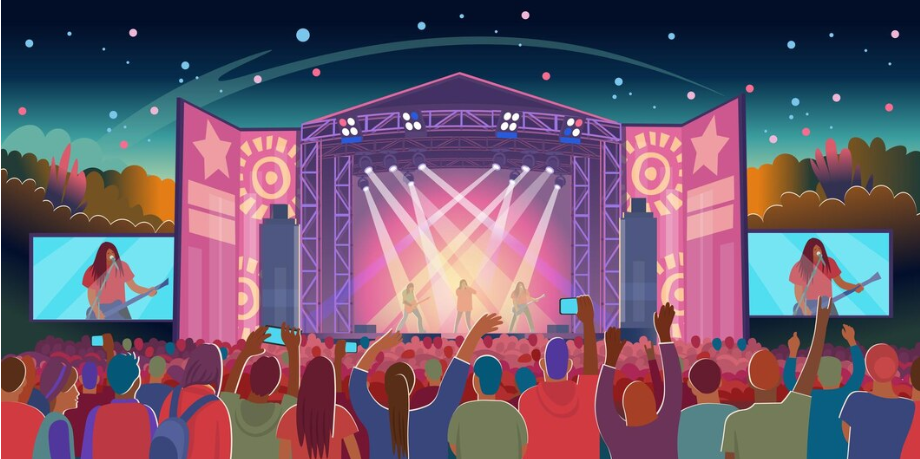
Pic Courtesy: Freepik
Unique and high-quality entertainment can be a significant draw for attendees. If people know engaging performances will occur, they are more likely to attend and stay for the event. Entertainment can generate buzz and excitement before, during, and after the event. Attendees will likely share their experiences on social media, extending the event’s reach and visibility.
Some of the entertainment and performance strategies that you can include at events include:
- Live Music: Bands, solo artists, or DJs can perform live to entertain attendees during breaks or at the end of the day.
- Cultural Performances: Dance troupes, theater groups, or traditional performers reflecting local culture or event theme.
- Interactive workshops: These are hands-on activities such as art classes, cooking demonstrations, or craft sessions that entertain while providing a learning experience.
- Celebrity Appearances: Inviting celebrities or influencers to perform or speak can attract attention and increase event attendance.
8. Wellness Activities
Incorporating wellness activities into an event helps organizers create a more engaging, balanced, and enjoyable experience for attendees. This focus on well-being enhances individual attendee satisfaction and contributes to the event’s overall success and positive perception.
After all, events can be exhausting, especially those with intensive schedules. Wellness activities like yoga, meditation, or relaxation sessions help reduce stress and recharge attendees, allowing them to stay engaged and productive.
Physical activities and wellness breaks can improve attendees’ focus and concentration by providing a mental break, leading to better engagement and retention of information during sessions. Offering wellness activities can also attract attendees who prioritize health and well-being. It adds an extra layer of value to the event, encouraging more people to attend and participate.
A few examples of practical wellness activities at events include:
- Yoga and Meditation Sessions: Guided yoga and meditation classes to help attendees relax and de-stress.
- Mindfulness Workshops: Sessions focused on mindfulness techniques, stress management, and mental health.
- Interactive Health Booths: Booths offering health assessments, wellness tips, and personalized consultations.
- Wellness Lounges: Designated quiet areas with comfortable seating, calming music, and relaxation aids.
- Massage Stations: On-site massage therapists offer chair massages to help attendees relax and relieve tension.
9. Unique Experiences
By incorporating unique experiences into the event schedule, organizers can create a dynamic and engaging environment that captivates attendees, fosters positive memories, and distinguishes the event from others.
Unique experiences stand out and create lasting memories for attendees. When an event offers something distinctive and different, it leaves a stronger impression, making it more likely that attendees will remember the event positively.
When participants encounter something novel or unexpected, their curiosity and interest are piqued, leading to higher levels of engagement. Unique experiences encourage attendees to explore the event more. Whether it’s a scavenger hunt, an interactive installation, or a surprise performance, these elements can drive participants to engage more fully with the event space and offerings.
A few examples of unique experiences at events include:
- Interactive Art Installations: Create immersive art installations that attendees can interact with, such as digital graffiti walls or 3D sculptures.
- Themed Experiences: Design parts of the event around a specific theme, such as a vintage carnival, futuristic city, or cultural festival.
- Interactive Technology: Use cutting-edge technology like holograms, drones, or AI to create unique and futuristic experiences.
- Pop-Up Experiences: Incorporate pop-up shops, eateries, or entertainment that appear for a limited time during the event.
10. Post-Event Engagement
Post-event engagement helps maintain the momentum generated during the event. Interacting with attendees helps organizers keep the excitement and interest alive long after the event.
Continued engagement after an event helps build and strengthen relationships between organizers, attendees, and attendees. Engaging with attendees post-event provides an opportunity to gather valuable feedback. This feedback can be used to improve future events and address any issues or concerns attendees may have had.
Furthermore, post-event engagement allows organizers to measure the event’s success and impact. Analyzing engagement metrics, such as content downloads, social media activity, and email open rates, provides insights into the event’s effectiveness.
A few examples of post-event feedback include:
- Thank You Emails: To express appreciation for their participation, send personalized thank you emails to attendees, speakers, sponsors, and partners.
- Follow-Up Surveys: Distribute surveys to gather feedback on various aspects of the event, such as sessions, speakers, logistics, and overall experience.
- Resource Sharing: Provide additional resources, such as whitepapers, eBooks, presentation slides, and articles related to the event’s topics.
- Social Media Engagement: Use event hashtags to encourage attendees to share their experiences and key takeaways on social media. Highlight user-generated content on the event’s social media channels.
- Exclusive Offers: Provide attendees exclusive offers, such as discounts on future events, access to premium content, or special promotions from event sponsors.
Key Takeaway
As you can see, mastering event engagement in 2024 is no easy feat. It requires integrating technology, personalization, and creativity. Event organizers must utilize advanced digital tools and offer unique, memorable experiences to captivate and connect with attendees. Incorporating wellness activities, post-event engagement, and innovative networking will ensure successful and impactful events.
To create meaningful and unforgettable event experiences, event organizers must stay ahead of the game by using the aforementioned cutting-edge ideas and giving reasons for the attendees to return for future editions of the same event. For more information on events and event-related information, visit Eventible.

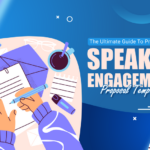


Comments are closed.